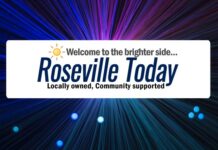Sacramento, Calif. – UC Davis surgeons have launched a “proof-of-concept” clinical trial to test the safety and efficacy of a device that can rapidly concentrate and extract young cells from the irrigation fluid used during orthopaedic surgery.
“The new approach holds promise for improving the delivery of stem cell therapies in cases of non-healing fractures.”
“People come to me after suffering for six months or more with a non-healing bone fracture, often after multiple surgeries, infections and hospitalizations,” said Mark Lee, associate professor of orthopaedic surgery, who is principal investigator on the clinical trial. “Stem cell therapy for these patients can be miraculous, and it is exciting to explore an important new way to improve on its delivery.”
About 6 million people suffer fractures each year in North America, according to the American Academy of Orthopaedic Surgeons. Five to 10 percent of those cases involve patients who either have delayed healing or fractures that do not heal. The problem is especially troubling for the elderly because a non-healing fracture significantly reduces a person’s function, mobility and quality of life.
Stem cells – early cells that can differentiate into a variety of cell types – have been used for several years to successfully treat bone fractures that otherwise have proven resistant to healing. Applied directly to a wound site, stem cells help with new bone growth, filling gaps and allowing healing and restoration of function. However, obtaining stem cells ready to be delivered to a patient can be problematic. The cells ideally come from a patient’s own bone marrow, eliminating the need to use embryonic stem cells or find a matched donor.
But the traditional way of obtaining these autologous stem cells – that is, stem cells from the same person who will receive them – requires retrieving the cells from a patient’s bone marrow, a painful surgical procedure involving general anesthesia, a large needle into the hip and about a week of recovery.
In addition, the cells destined to become healing blood vessels must be specially isolated from the bone marrow before they are ready to be transplanted back into the patient, a process that takes so long it requires a second surgery.
The device Lee and his UC Davis colleagues are now testing processes the “wastewater” fluid obtained during an orthopaedic procedure, which makes use of a reamer-irrigator-aspirator (RIA) system to enlarge a patient’s femur or tibia by high-speed drilling, while continuously cooling the area with water. In the process, bone marrow cells and tiny bone fragments are aspirated and collected in a filter to transplant back into the patient. Normally, the wastewater is discarded.
Although the RIA system filter captures the patient’s own bone and bone marrow for use in a bone graft or fusion, researchers found that the discarded effluent contained abundant mesenchymal stem cells as well as hematopoietic and endothelial progenitor cells, which have the potential to make new blood vessels, and potent growth factors important for signaling cells for wound healing and regeneration. The problem, however, was that the RIA system wastewater was too diluted to be useful.
Now, working with a device developed by SynGen Inc., a Sacramento-based biotech company specializing in regenerative medicine applications, the UC Davis orthopaedic team can take the wastewater and spin it down to isolate the valuable stem cell components. About the size of a household coffee maker, the device will be used in the operating room to rapidly produce a concentration of stem cells that can be delivered to a patient’s non-union fracture during a single surgery.
“The device’s small size and rapid capabilities allow autologous stem cell transplantation to take place during a single operation in the operating room rather than requiring two procedures separated over a period of weeks,” said Lee. “This is a dramatic difference that promises to make a real impact on wound healing and patient recovery.”
For more information, visit http://www.ucdmc.ucdavis.edu/stemcellresearch.
(21+ years strong)
Welcome to the brighter side!
Get in front of local customers! 24/7 (365)





















